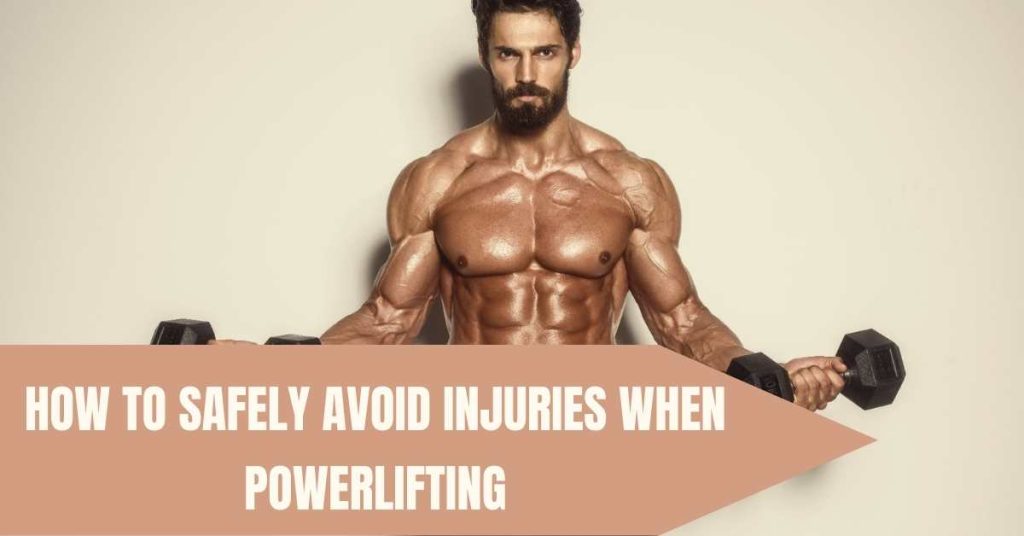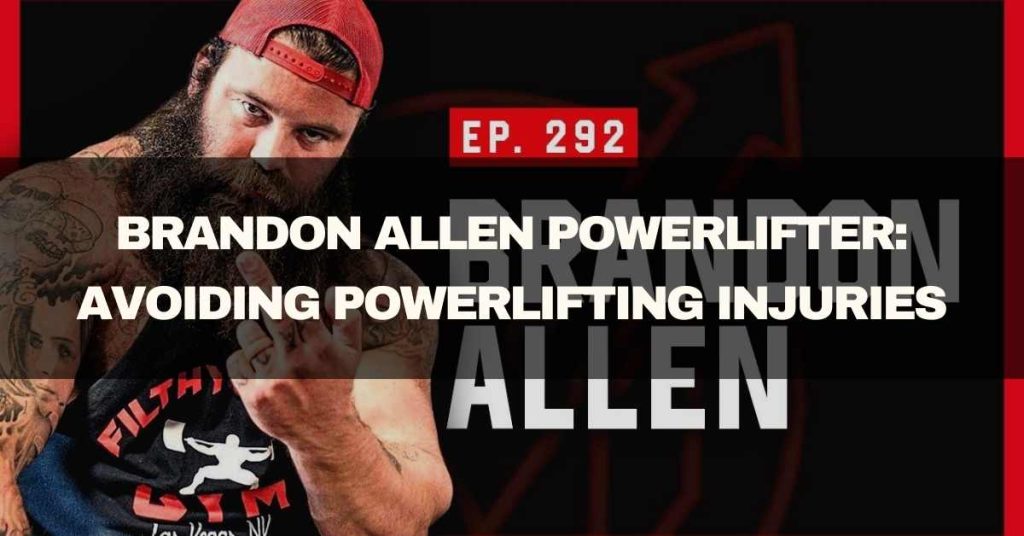Table of Contents
Powerlifter Brandon Allen Gets Injured While Powerlifting
This is in the “not for the faint of heart” category because it’s very unpleasant. So Brandon Allen is as tough as they come. Super-heavyweight powerlifter with several tattoos and a slick “Santa” beard. He is also an outstanding powerlifter, consistently achieving +2200lbs totals in raw and equipped powerlifting events.
This dude is so a kickass powerlifter that his 2018 total placed him just over The Mountain in the +300lbs weight class, where he slaughtered everyone in his first powerlifting event.
Brandon Allen, one of the world’s strongest men, performed 1045lbs/474kg on a wobbly bar, knocking out over half of the competitors in the Arnold Strongman competition, including his primary competitor, Brian Shaw. Injuries, however, are a feature of all sports, and powerlifting is no different. When you consider the tremendous weights that powerlifters move, it should be a miracle that a powerlifter does not get injured.
Brandon was having a masculine and rather intense squatting session at the “Filthy Powerhouse Gym” as part of his preparation for a powerlifting event, the “Kern Open,” and everything appeared to be normal. Angry metal music was blasting, everyone was hyped up, it was business as usual, and everything was going as planned. Brandon was probably picturing himself annihilating another powerlifting competition when calamity struck. He felt a crack in his right knee as he squatted back up with 925 pounds on his back.
He miraculously found the physical and emotional strength to complete the rep and rack the bar back up. He zoned back into his body seconds later, and reality, accompanied by severe pain, hit him like a bolt of lightning. The most winstrol benefits intriguing aspect is that this was not even his heaviest squat. He squatted 1008 pounds and made it seem simple back in October at a contest in Australia.
Brandon wasted no time in getting his knee mended and went into surgery as soon as he could, and he is now recovering.
No one is immune to injuries; they occur all the time, even to the top players. We are all made of flesh and bone, with natural (or, in Brandon Allen’s case, supernatural) limitations.
Our bodies are built to wear out and degrade. What differentiates the winners from the losers, however, is the rebuilding of the phase. Will you allow an injury to shatter you mentally or will you work hard to return to the top?
Consider Calum Von Moger, who had one of the worst years in fitness history. He first tore his biceps while doing tandem biceps curls, and then another setback occurred just as he was beginning his comeback phase.
He re-torn his biceps and blew up his knee while attempting a rope cliff descent. The re-injury sidelined him for the rest of 2018, forcing him to relax as his body heals. He is finally regaining his previous gains and appears to be as huge as before. Weak times do not define you; it is how you respond to them that does.

How to Safely Avoid Injuries when Powerlifting
Being injured is one of every powerlifter’s biggest nightmares.
We train so hard and devote so much time and energy to our quest for strength, only to be derailed by persistent back or knee pain. If you play this sport long enough, you will undoubtedly sustain an injury.
So, how do we handle injuries in powerlifting? Recovering from aches, pains, and injuries necessitates a methodical approach that prioritizes long-term solutions while using short-term therapies as needed.
Long-term remedies include the following:
- Volume & loading
- Exercise selection
- Overall Technique
- Sleep, Nutrition, & External stress
- Amount of Daily Activity
- Mental Approach
There is no one-size-fits-all method, but rather a holistic approach to addressing the variables that affect your recuperation and training. Most people make the mistake of focusing on short-term treatments rather than long-term solutions. Let’s start with an explanation of what a “injury” is, and then go on to the long-term solutions.
What Is An Injury in Powerlifting?
Before continuing, there must be one thing that we all recognize as a fact of injury:
Any injury occurs when a tissue is pushed beyond its tolerated limits, whether by overuse or an acute overload.
Powerlifting injuries are classified as overuse injuries since the discomfort increases over time as we continue to press the tissues above their tolerated limitations. Overuse injuries typically begin as a minor discomfort or pain and progress from a minor annoyance to persistent pain that compels us to reduce our normal exercise.
A pec tear or quad tendon rupture, on the other hand, is a more catastrophic acute overload injury. These tissues may have already been in the overuse group and pushed so far that acute overload damage occurred, but either way, these injuries are considerably more severe and will require much more work to recover from than will be described in this article.
But what I’ll talk about is the capacity to avoid acute traumatic injuries by managing your training and recuperation properly from the outset.
So, how do we deal with these injuries?
First and foremost, we must examine our overall training and make the long-term changes required to find the bearable limitations that will allow us to train pain-free.

Long Term Solutions
As powerlifters, we are constantly fighting the struggle of inflicting stress on the body through training and outside activities, while also attempting to recover from the training with sufficient rest, sleep, and diet. Each of these variables plays a role in the development of an injury and its rehabilitation, so let’s look at the various training and external variables that play a role.
Volume & Loading
As previously stated, the major cause of injury is when a tissue is pushed beyond its tolerated boundaries. So one of the first things we should consider is our training.
Simply put, are we doing too much?
If you’ve had a slow buildup of pain over time that you now consider chronic, I’d recommend looking into your training volume and loading as a possible cause.
Exercise Selection
When it comes to exercise selection and injuries, I have a general rule: if the achiness or soreness is caused by an activity other than your competition squat, bench press, or deadlift, then remove it. If the pain is caused by your competitive squat, bench press, or deadlift, we will need to look at the other variables.
Technique
Technique can play a significant role in aches, pains, and injuries, but it plays a slightly different role than most people assume. Many individuals believe that poor technique will result in injuries, although this is not always the case.
Sleep, Nutrition, and External Stress
We’ve discussed training variables, but external variables, particularly sleep and diet, have a significant impact in your recovery. As previously stated, we must adopt a holistic approach to determine what is causing our aches and pains.
Amount of Daily Activity
This is a less-discussed external variable, but it has frequently come into play for me.
We humans, for the most part, have the same day-to-day and week-to-week activities. We do not often have big changes in volume and loading from week to week in training, nor do we typically have large fluctuations in activity in our daily lives outside of the gym. As a coach, I do not have my athletes log everything they do outside of the gym, which is a bit extreme, but if we do have a flare-up of discomfort, I will inquire whether they did anything out of the ordinary in their everyday lives.
Mental Approach
We powerlifters have a tendency to exaggerate any and all injuries. Any symptom of discomfort sends us into panic mode, and we prepare for the worst. The mind is quite powerful, and I have observed multiple times, including inside myself, that overdramatization causes increased pain levels because to our hypersensitivity to the location and internalization of the damage being greater than it is. I’ve seen powerlifters who felt they had a disk bulge and couldn’t move, only to feel better the next day after going to the doctor and finding out it was simply a small strain.


